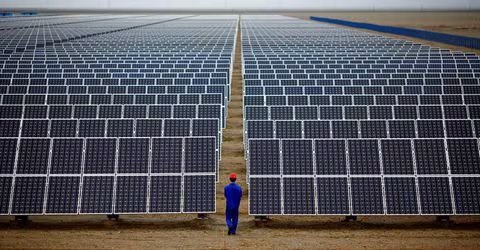Global renewable energy capacity is expected to grow by two and a half times by 2030 but governments need to go further to achieve a goal of tripling it by then agreed at United Nations’ climate talks, the International Energy Agency (IEA) said.

In its annual renewable energy outlook report, the IEA said new capacity added last year increased by 50% from the previous year to 510 gigawatts (GW). That takes installed capacity to 3,700 GW.
Under current policies and market conditions, global renewables capacity is forecast to grow to a total of 7,300 GW by 2028. To reach the 2030 goal agreed last year, it will require reaching at least 11,000 GW.
World governments agreed to triple renewable energy generation capacity by 2030 and move away from fossil fuels at the COP28 U.N. climate conference in Dubai last December. But no mechanism was agreed to finance the shift to clean energy in developing countries.
The report said the biggest challenge to meeting the goal will be scaling up financing and deployment of renewables in most emerging and developing economies.
“In the absence of any help for African and low-income countries in Asia and Latin America, they will not be able to reach their clean energy targets. That will be a fault line in reaching the 2030 goal,” Fatih Birol, executive director of the IEA, told Reuters.
Over the past year, higher inflation and interest rates have also increased equipment and financing costs of renewables projects and policies have been slow to adjust to the new macro-economic environment.
Insufficient investment in grids is also hampering faster deployment of renewables, as well as slow and bureaucratic permitting procedures and administrative barriers.
Last year, China had the largest growth in renewables and is expected to account for nearly 60% of new renewable capacity by 2028.
China’s role is crucial in reaching the 2030 goal because it is expected to install more than half of the new capacity required globally by the end of the decade, the IEA said.
Solar photovoltaic and onshore wind additions to 2028 are also expected to more than double in the United States, the European Union, India and Brazil compared with the last five years.
Despite many announcements of green hydrogen projects – where hydrogen is produced by using renewable energy to split water and heralded as a cleaner fuel for energy intensive industry and transport – progress is slow, with only 7% of current projects expected to come online by 2030, the IEA added.
Reuters (Source: tuoitrenews.vn)


